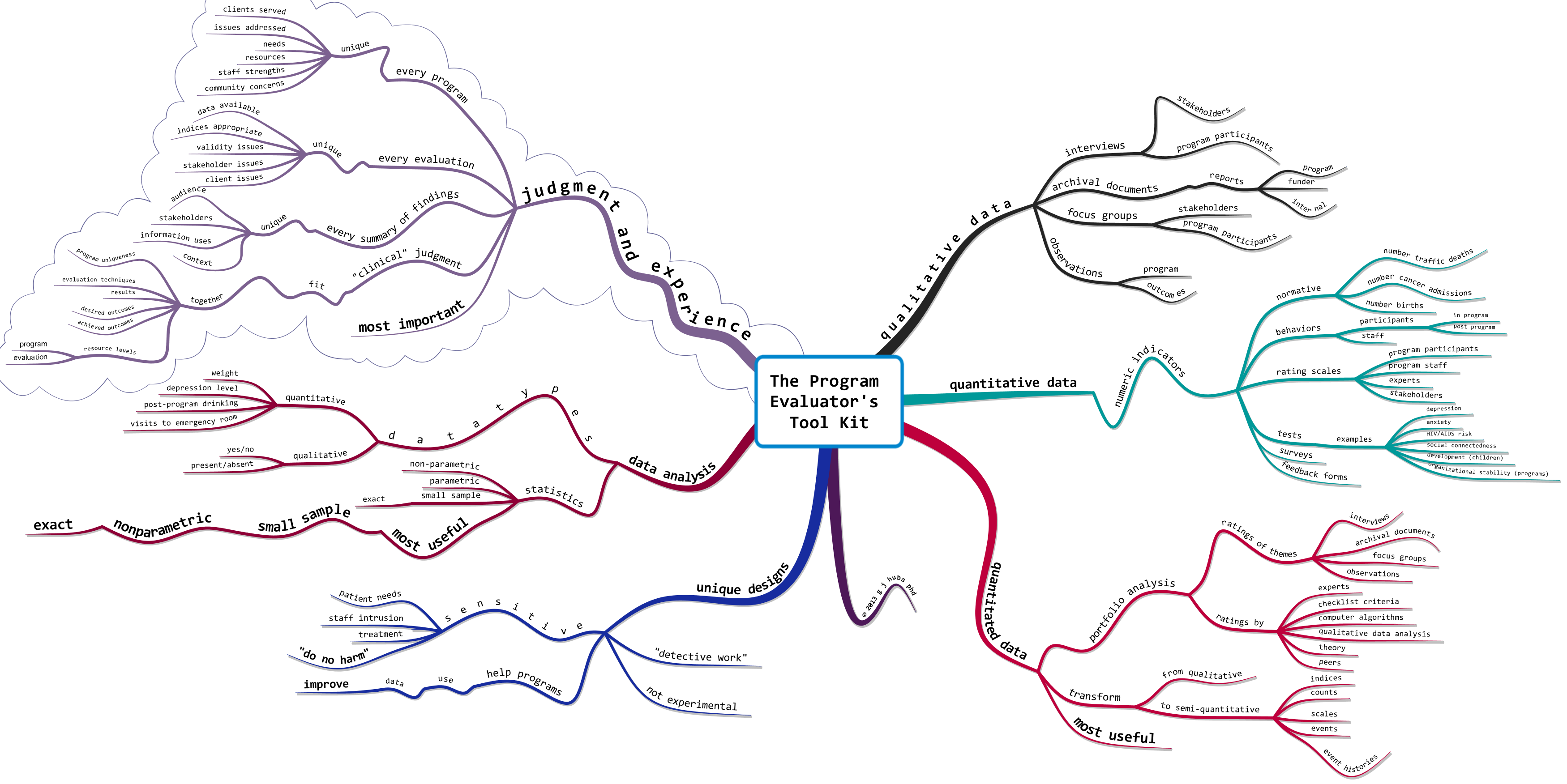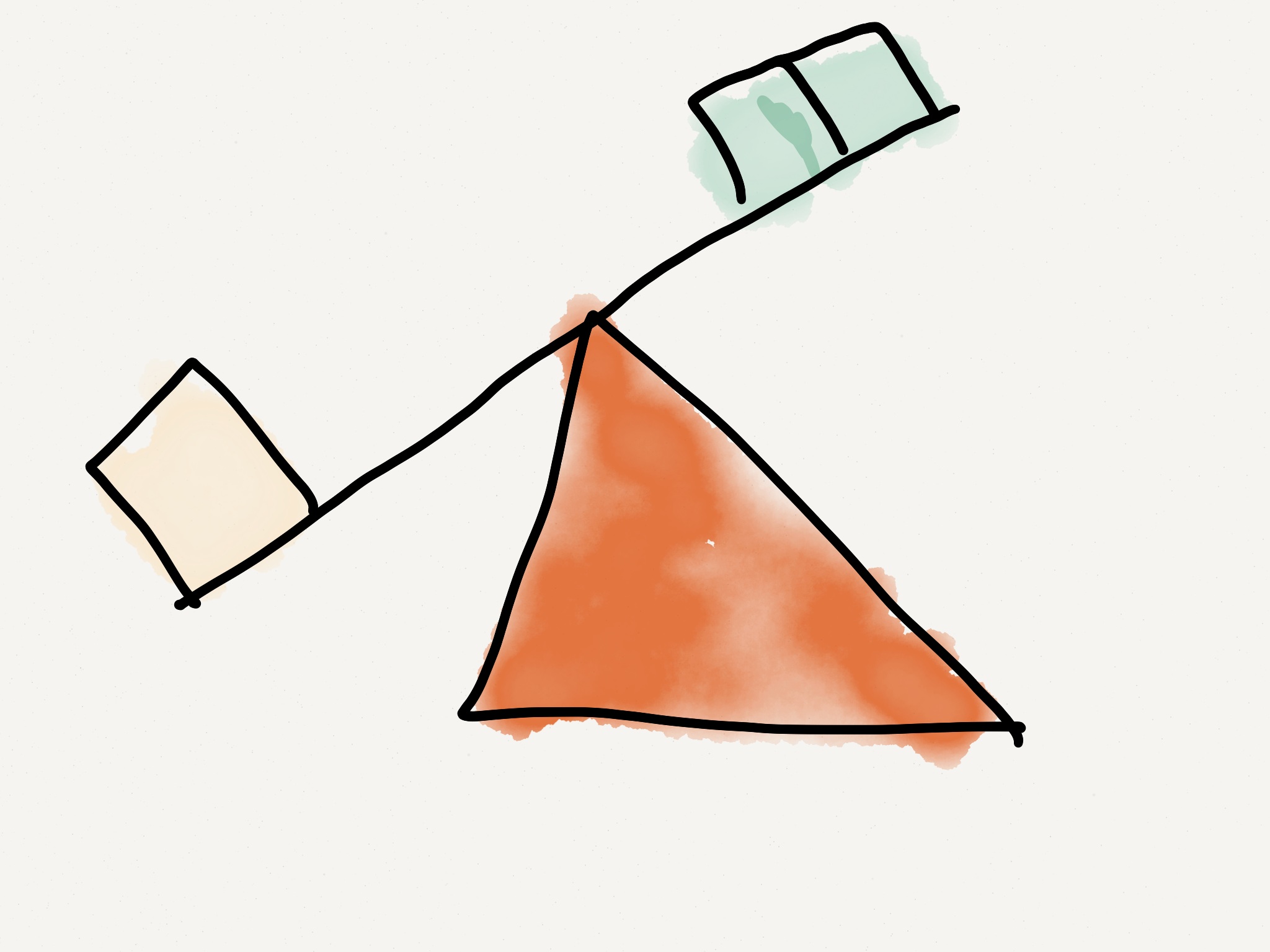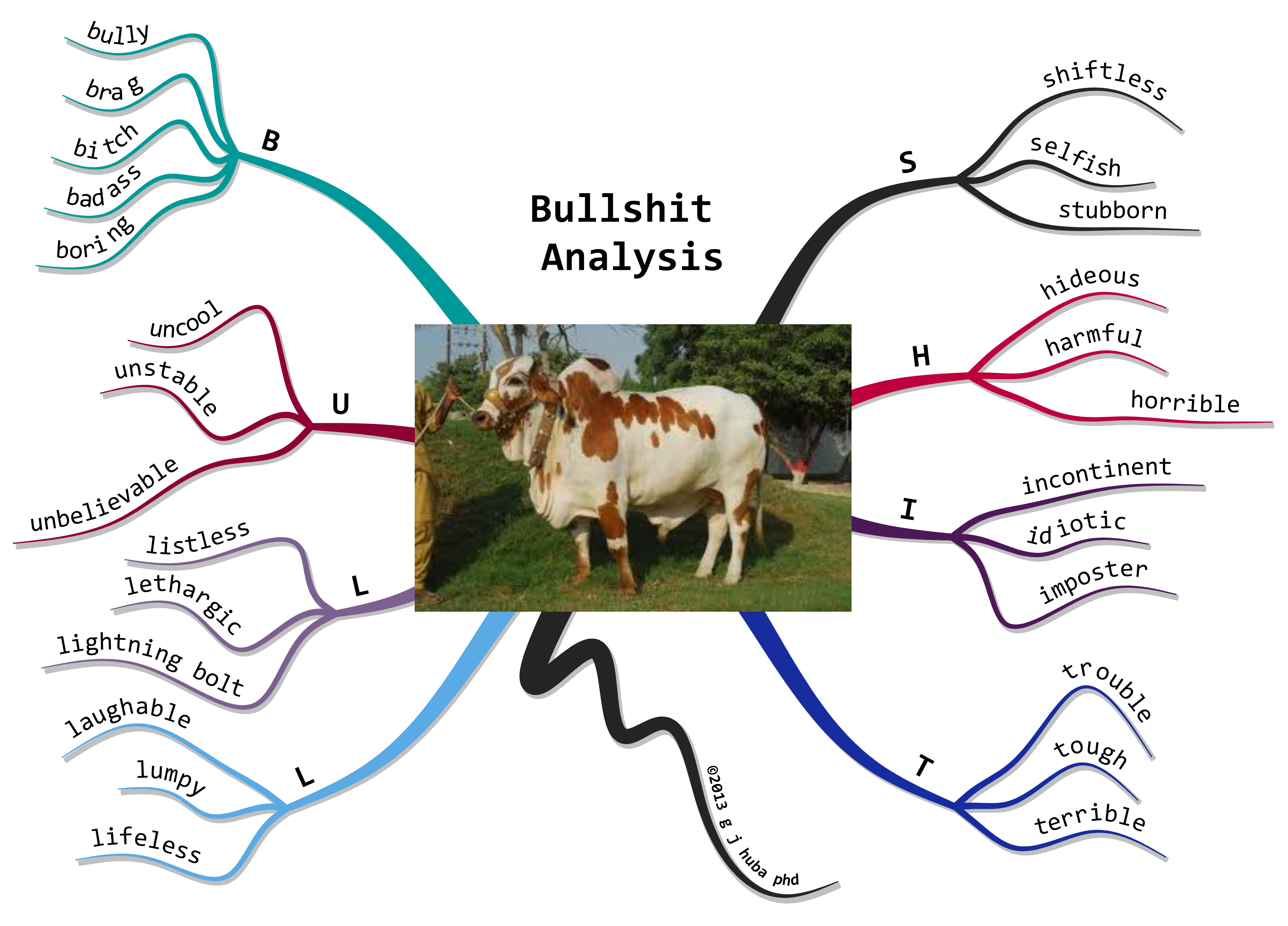No, I haven’t lost “it” and this is not a science fiction story.
With the unleashing of big data, big computing, big temptations, and big greed, it is going to be real tempting to develop a George Huba (and also perhaps a Bill Smith or Mary Doe or heaven forbid, a Donald Trump) computer model that can fairly accurately predict from my lifetime experiences whether one will buy a new car next year (and what type and in which cost range and maybe from which car dealer), purchase or sell a home, shift from converse to adidas sneakers, become emotionally distressed if no chocolate is available, and purchase Apple stock to invest or trade. Or run a simulation of one as the CEO of a particular company to determine who gets the job. Or look at one’s medical history and determine whether it is likely thatgrandchildren will have each of 20 expensive diseases that no insurer wants to touch.
Already the IRS runs programs to estimate the likelihood I cheated on my income taxes, Amazon runs programs to estimate the likelihood I will purchase certain books and socks before or after the December holidays, and my credit card company runs models to determine whether it is likely or not that I purchased shoes while on a business trip (yup, they once froze my credit card while I was in DC on business because their computer model says I only buy sneakers).
OK, so the accuracy of the big data scientists is only something like 20-50% now. What do you think it will be when your book purchasing history is fully integrated with your job history, income, ice cream purchases, pharmaceutical purchases, video watching history, total hamburger purchases, and BMI? And then fine tuned with the grade you got in college English, chemistry, or psychology; whether you had a hiking or a beach vacation and if you purchased (used) sunscreen and had a history of purchasing sun hats; the diseases that all four of your grandparents and parents had at different times in their lifetimes. And whether your car is more than 3 years old. And what do you think it will be when we create a generation of data scientists willing to capitalize on huge data to build such models for salaries that will approach those of professional athletes and rock stars? Most of the world’s richest people are already individuals who are promoting and benefitting from big data to predict what you will do.
Ten years from now, the computer models produced of selected individuals will make Mark Zuckerberg, the Google guys, Apple, and Jeff Bezos look like rank amateurs in profiling. The Russians and Chinese, of course, are already well advanced and a threat every time we vote.
[Oh, and by the way while writing this post Google knows that I looked up Mark Zuckerberg’s name and the spelling of adidas.]
I want to tell anyone that wants to develop a mathematical, computer model of me (or my behavior, beliefs, attitudes, skills, history, and future intentions) to cease and desist. Or [more indelicately] fuck off.
Which raises the questions … Do I own the copyright (patent, trademark) to my own life? [And if I do, what are the limits and will violations of those laws by a number of countries and companies be ignored?]
This is not so far-fetched. I spent my whole life becoming the person I am. Does anybody have the right to take all of the big data about me and distill my life down to formulae and algorithms that will explain my past and current behavior and predict what I will do in the future? Should people be allowed to model individuals, I fear that the suicide rate will go up dramatically as people find out how much these models can be used to control them and when they are predicting you will die.
As a psychologist, I spent my career studying people so that we might better understand their fears and concerns, help them better use their full potential, become happier, control their own aggressive or violent tendencies, and generally become the people THEY WANTED to be. And I, nor other ethical psychologist, struck out with the intent to model the behaviors of others so well that the resulting models could be sold to governments and corporations.
Big and huge data, data scientists, companies, and governments need to be prohibited from violating the rights of individuals to “own” their individual lives. If we ever let others “own” our individual identities, we will have crossed into new territory from which there is no return. The technology is almost there to create such individual mathematical models. Russia, for instance, seems to have a pretty good Trump model they are licensing to the Saudis and others.
I was endowed by my creator to own the copyright, patents, and trademarks of my own life… and to answer for what I chose to do with that intellectual property (free will). I choose not to sell my soul to the devil, it’s data scientists, psychologists, and hackers.
A few more thoughts are in the mind map below.
Click on the diagram to zoom.

Like this:
Like Loading...





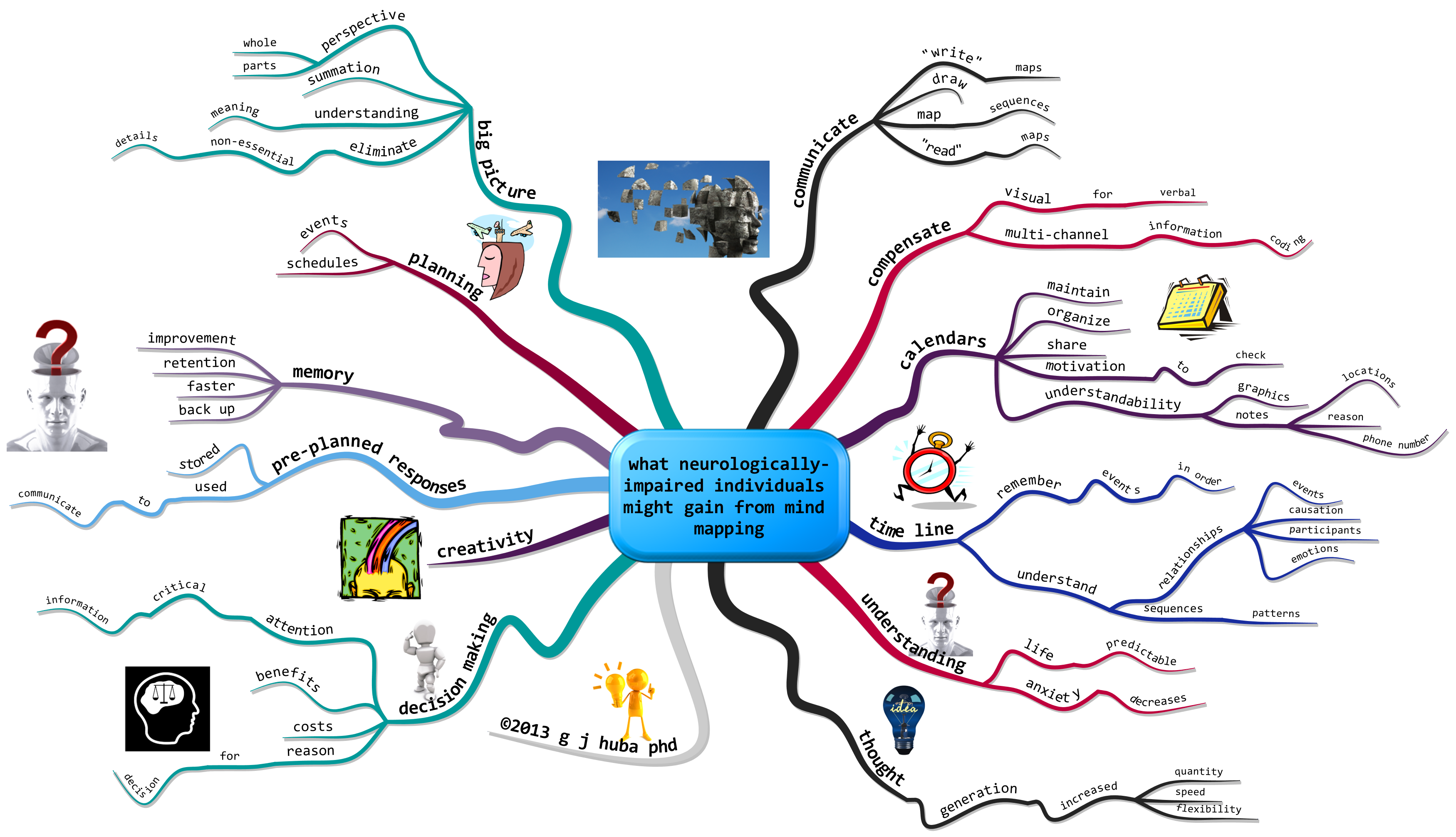



























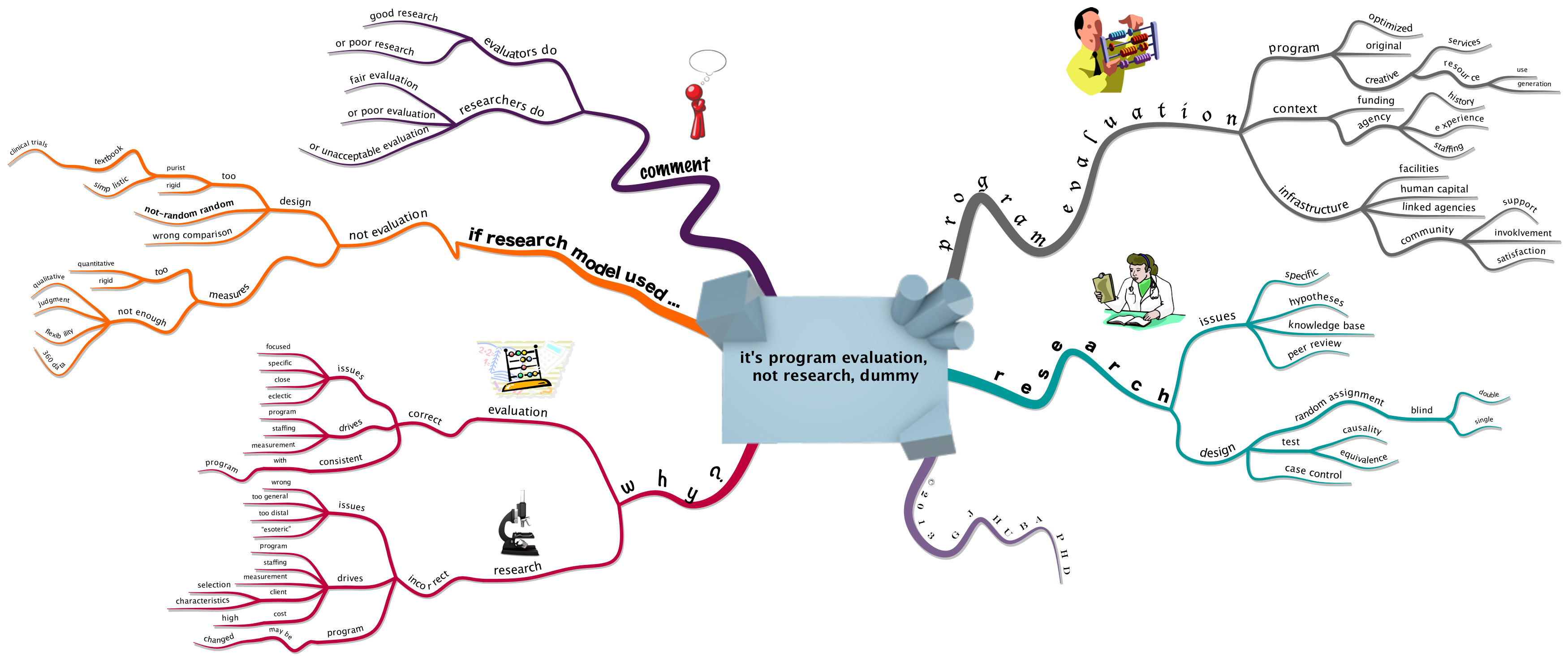



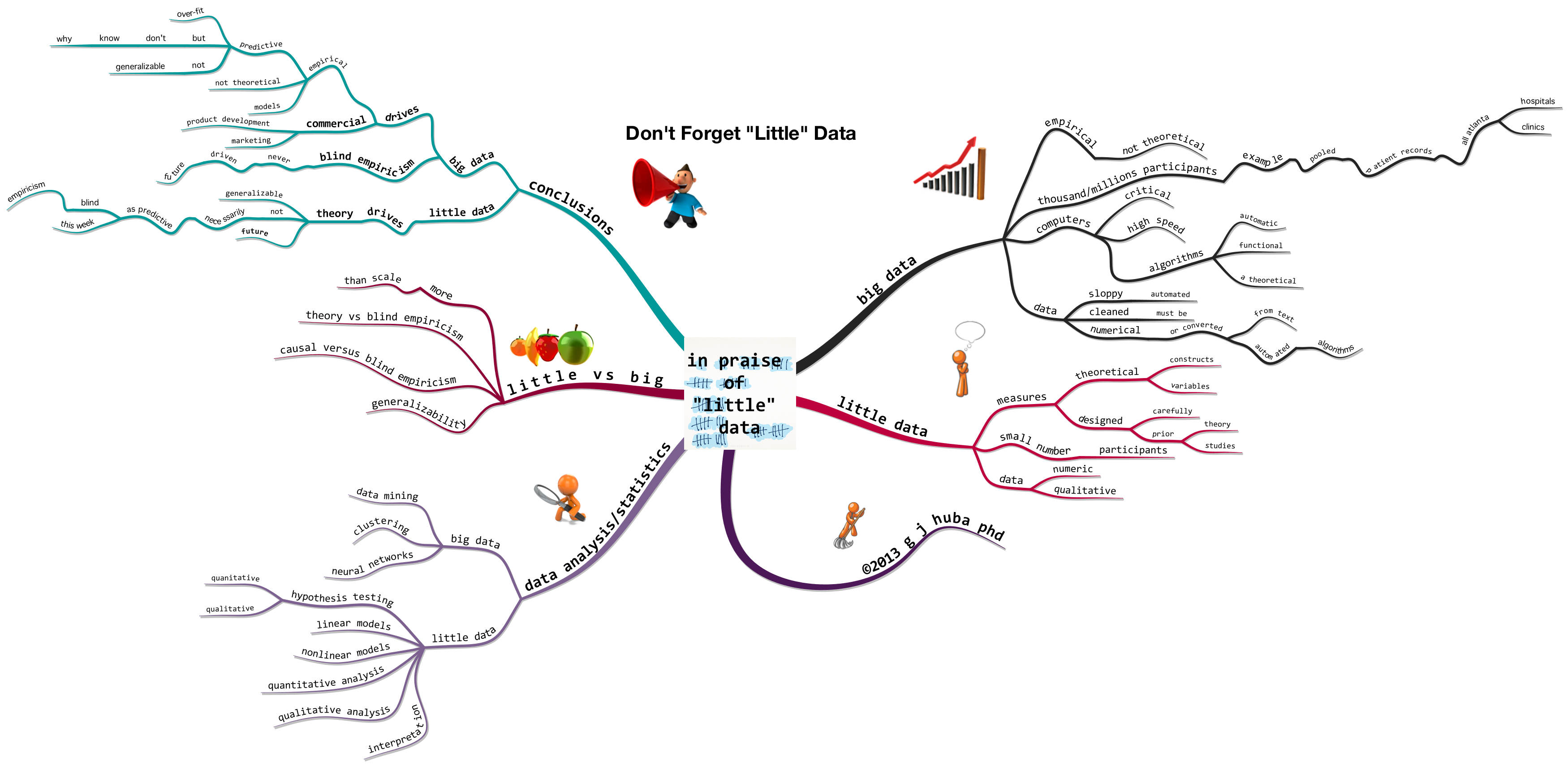

![[almost free] strategies to improve healthcare](http://hubaisms.com/wp-content/uploads/2013/04/almost-free-strategies-to-improve-healthcare.png?w=922)








